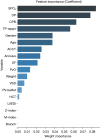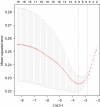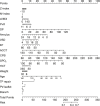Adverse events after repair of tetralogy of Fallot: prediction models by machine learning of a retrospective cohort study in western China
- PMID: 36891362
- PMCID: PMC9986786
- DOI: 10.21037/tp-22-246
Adverse events after repair of tetralogy of Fallot: prediction models by machine learning of a retrospective cohort study in western China
Abstract
Background: The incidence of clinical adverse events after tetralogy of Fallot (TOF) repair remains high. This study was performed to explore risk factors for adverse events and develop a prediction model through machine learning (ML) to forecast the incidence of clinical adverse events after TOF repair.
Methods: A total of 281 participants who were treated with cardiopulmonary bypass (CPB) at our hospital from January 2002 to January 2022 were included in the study. Risk factors for adverse events were explored by composite and comprehensive analyses. Five artificial intelligence (AI) models were used for ML to build prediction models and screen out the model with the best performance in predicting adverse events.
Results: CPB time, differential pressure of the right ventricular outflow tract (RVOTDP or DP), and transannular patch repair were identified as the main risk factors for adverse events. The reference point for CPB time was 116.5 minutes and that for right ventricular (RV) outflow tract differential pressure was 70 mmHg. SPO2 was a protective factor, with a reference point of 88%. By integrating the results for the training and validation cohorts, we confirmed that, among all models, the logistic regression (LR) model and Gaussian Naive Bayes (GNB) model were stable, showing good discrimination, calibration and clinical practicability. The dynamic nomogram can be used as a predictive tool for clinical application.
Conclusions: Differential pressure of the RV outflow tract, CPB time, and transannular patch repair are risk factors, and SPO2 is a protective factor for adverse events after complete TOF repair. In this study, models developed by ML were established to predict the incidence of adverse events.
Keywords: Tetralogy of Fallot (TOF); adverse events; artificial intelligence (AI); machine learning (ML).
2023 Translational Pediatrics. All rights reserved.
Conflict of interest statement
Conflicts of Interest: All authors have completed the ICMJE uniform disclosure form (available at https://tp.amegroups.com/article/view/10.21037/tp-22-246/coif). The authors have no conflicts of interest to declare.
Figures









References
LinkOut - more resources
Full Text Sources
